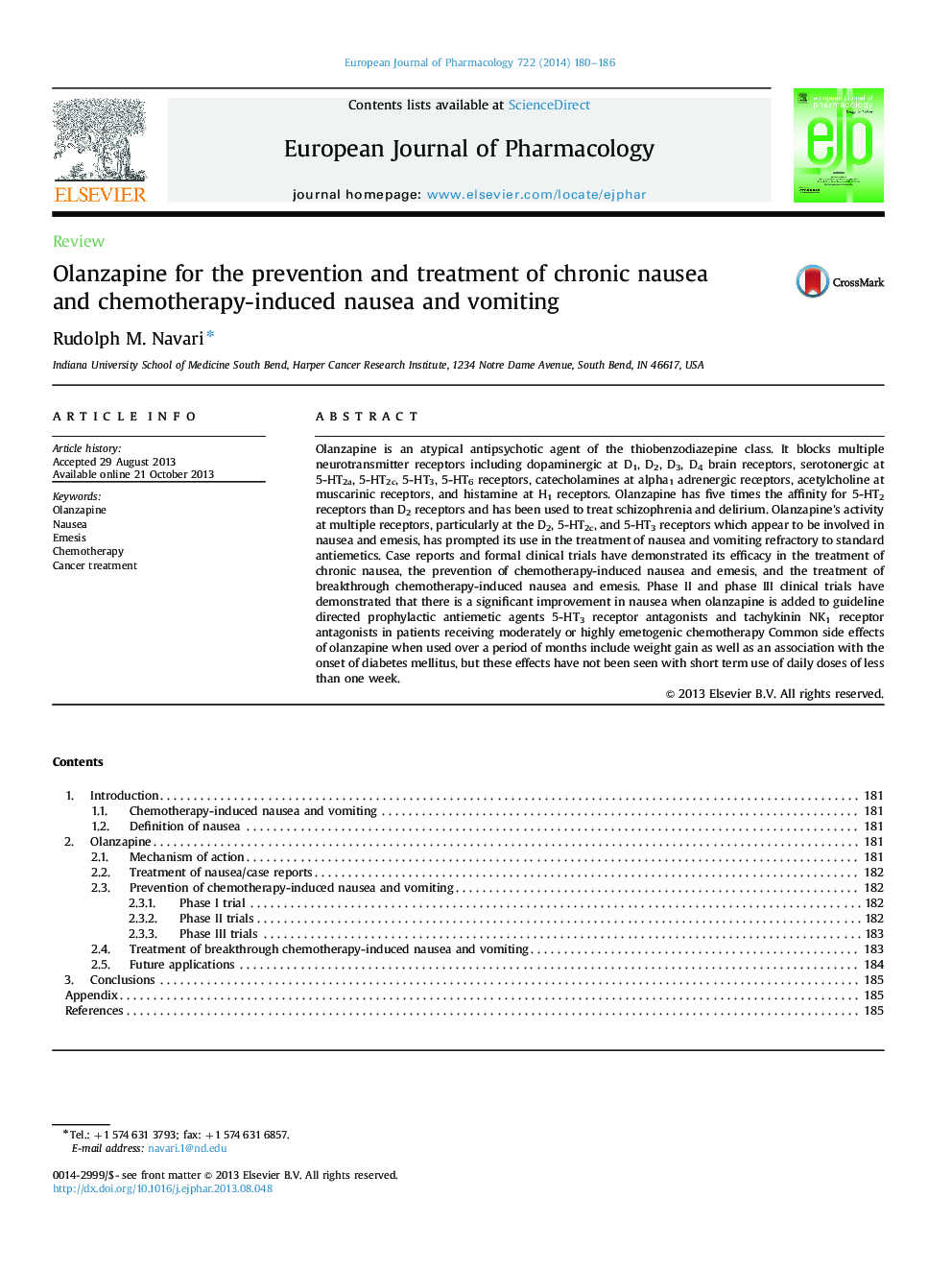| Article ID | Journal | Published Year | Pages | File Type |
|---|---|---|---|---|
| 2531879 | European Journal of Pharmacology | 2014 | 7 Pages |
Olanzapine is an atypical antipsychotic agent of the thiobenzodiazepine class. It blocks multiple neurotransmitter receptors including dopaminergic at D1, D2, D3, D4 brain receptors, serotonergic at 5-HT2a, 5-HT2c, 5-HT3, 5-HT6 receptors, catecholamines at alpha1 adrenergic receptors, acetylcholine at muscarinic receptors, and histamine at H1 receptors. Olanzapine has five times the affinity for 5-HT2 receptors than D2 receptors and has been used to treat schizophrenia and delirium. Olanzapine's activity at multiple receptors, particularly at the D2, 5-HT2c, and 5-HT3 receptors which appear to be involved in nausea and emesis, has prompted its use in the treatment of nausea and vomiting refractory to standard antiemetics. Case reports and formal clinical trials have demonstrated its efficacy in the treatment of chronic nausea, the prevention of chemotherapy-induced nausea and emesis, and the treatment of breakthrough chemotherapy-induced nausea and emesis. Phase II and phase III clinical trials have demonstrated that there is a significant improvement in nausea when olanzapine is added to guideline directed prophylactic antiemetic agents 5-HT3 receptor antagonists and tachykinin NK1 receptor antagonists in patients receiving moderately or highly emetogenic chemotherapy Common side effects of olanzapine when used over a period of months include weight gain as well as an association with the onset of diabetes mellitus, but these effects have not been seen with short term use of daily doses of less than one week.
